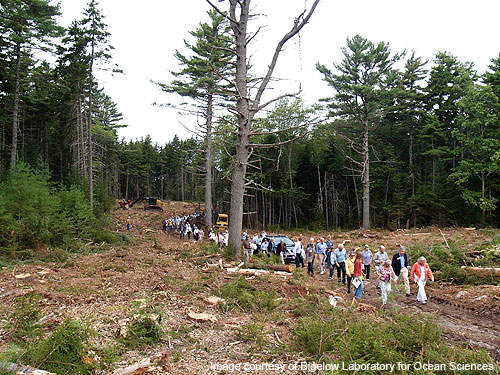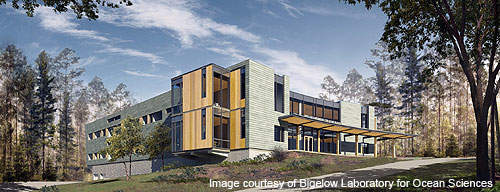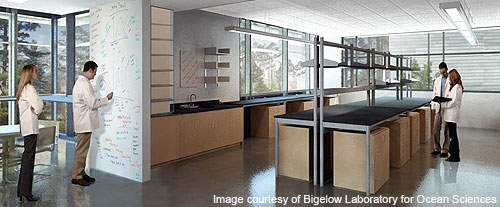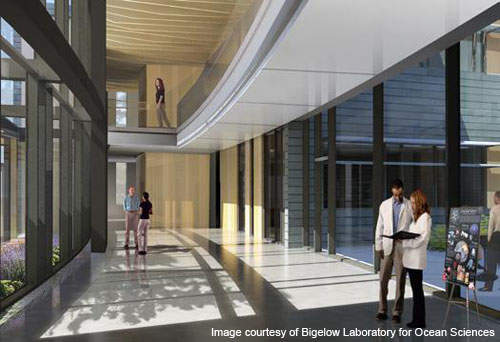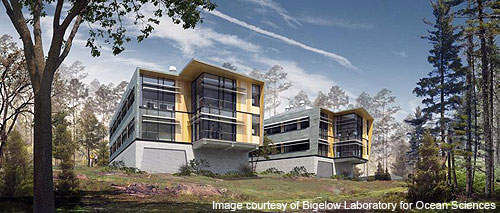The Bigelow Centre for Blue Biotechnology, (BCBB) is a new research centre built in East Boothbay, Maine, US. It conducts frontline research on applying the ocean’s microbial ecosystems to biopharmaceuticals. The $10m centre broke ground in September 2010 and was officially opened on 16 December 2011.
BCBB formed phase one of the 64-acre Ocean Research and Education Campus built by Bigelow Laboratory. It covers an area of 24,740ft².
Bigelow Laboratory’s Ocean Science and Education Campus project phases
Bigelow Laboratory’s Ocean Science and Education Campus was developed in three phases, the first phase being the BCBB facility.
The campus also houses the Center for Ocean Biogeochemistry and Climate Change, and the Center for Ocean Health. These two facilities were developed in the next two phases and were officially opened on 14 December 2012. A fourth science wing and administration building are being planned but are yet to be scheduled.
Bigelow Laboratory owns 64 acres in East Boothbay. The campus has been developed on 14 acres, while the remaining property is used as wildlife habitat, wetlands, and open space. The three facilities occupy a total space of 60,000ft².
The $31.8m campus provided 200 jobs during construction and employs 100 full-time staff at full capacity. Bigelow’s leased facilities at the Department of Marine Resources have been shifted to the new campus.
BCBB facility details and features
BCBB provides frontline research facilities for companies in the pharmaceutical, aquaculture, environmental impact assessment, analytical instrument and biofuels industries.
The Lincoln County Economic Development Office projected that BCBB would attract $34m to the state of Maine and help companies in acquiring new patents, intellectual property licensing and product development in five years.
The three-storey facility has the world’s first microbial single cell genomics facility, an advanced flow cytometry laboratory and a bioreactor facility.
The Provasoli-Guillard National Center for the Culture of Marine Phytoplankton (CCMP), which is part of the facility, is claimed to be the world’s biggest such collection centre.
In addition, there are 12 private offices, a café, conference space and a molecular biology laboratory with shared facilities for imaging and sterilisation. There is also space to accommodate two mobile laboratory units.
Sustainability of the new Bigelow Centre project
Bigelow Laboratory’s Ocean Science and Education Campus won LEED Platinum certification in February 2013. The buildings are designed to use maximum daylight and absorb heat. The exterior cladding of the façade is made of zinc and wood.
Interior and exterior building materials were selected based on their low carbon footprint and high recyclable content. Low water flow fixtures have been installed to conserve water.
The natural landscape design eliminates any irrigation requirement. High-performance window, roof and wall systems have been installed to improve energy performance. Construction material was recycled to minimise waste.
Financing
The facility was financed through funds received from the Maine Technology Asset Fund (MTAF) and contributions from private sources. A $4.45m finance facility was granted by the MTAF in 2009. It represented the biggest single grant from the state’s $50m research and development bond.
The property at East Boothbay was acquired in 2005 through a $1.46m loan facility granted by the National Oceanic and Atmospheric Administration. An additional $2m was obtained through private sources to finalise the property deal and commence planning of the new campus.
Contractors
The centre was designed by Perkins+Will in collaboration with WBRC Architects and Engineers.
The contract for site planning was awarded to Terrence J DeWan and Associates. Consigli was contracted for construction management services. Fore Solutions was the LEED consultant for the project.
Knickerbocker Group was contracted as the civil engineer for the project. The company provided the entire site engineering and environmental permitting services.

